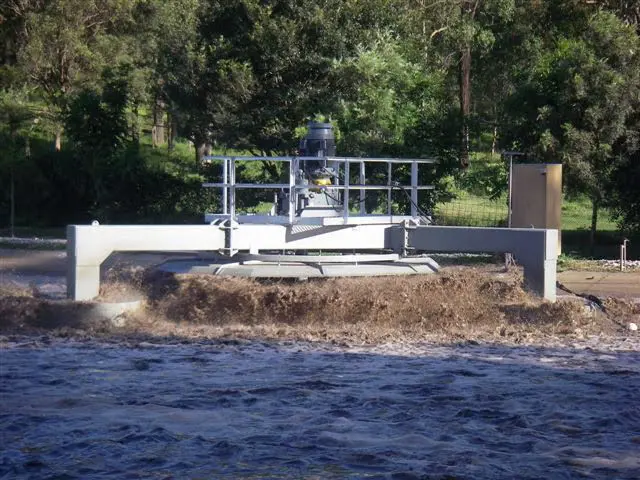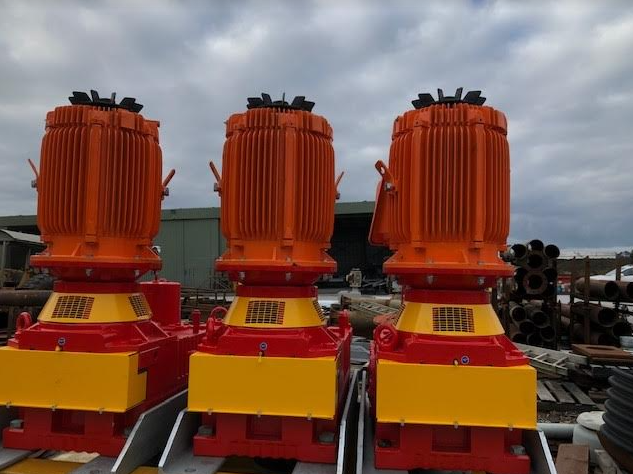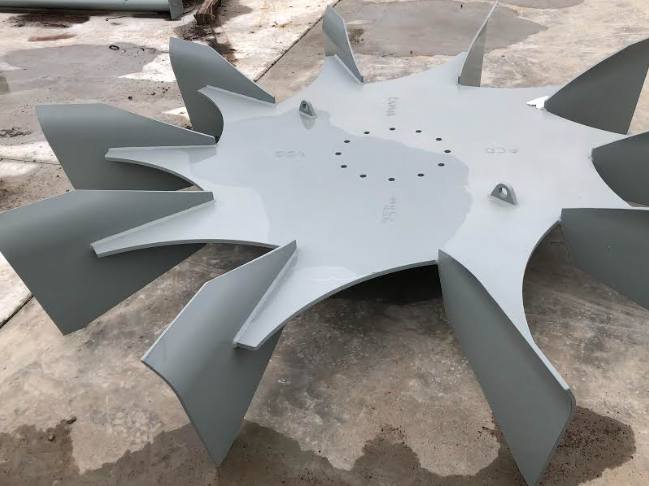
Surface aerators have, over the years, been the subject of intensive development, their chief application having been in the activated sludge process of sewage treatment. The prime factor affecting their design is naturally the efficiency of the transfer of oxygen to water. Surface aerators attempt to develop the largest possible interfacial area between air and liquid so that oxygen can diffuse from the air into the liquid.
In achieving this, it is necessary to prevent local build up of oxygen concentrations by promoting good mixing with the water. By‑Jas’ surface aerator satisfies both of these criteria in that it draws liquid from below water level and discharges it in a heavy torrent to create high turbulence when it strikes the water surface with great force. The character of the aerator is an important factor influencing the rate of oxygen transfer. The shape of the blades, depth of immersion and speed of revolution are some of the parameters which determine oxygen transfer.




